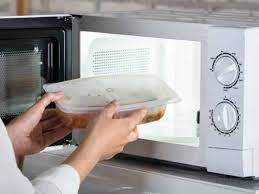Microwaving plastic food containers can release billions of small toxic plastic particles into your eatables, finds a new study.
The researchers found that microwaving plastic baby food containers released over two billion nanoplastics and four million microplastics for every square centimetre of container in some cases: The micro being particles at least 1/1,000th of a millimetre in diameter, the nano any particles smaller.
The study, published recently in the journal ‘Environmental Science & Technology’, also found that three-quarters of cultured embryonic kidney cells died after just two days of being introduced to those same particles.
“It is really important to know how many micro and nanoplastics we are taking in” said Kazi Albab Hussain, the study’s lead author and a doctoral student at the University of Nebraska–Lincoln, US. “Many studies, including ours, are demonstrating that the toxicity of micro and nanoplastics is highly linked to the level of exposure”, Hussain added.
The team conducted experiments with two baby food containers made from polypropylene and a reusable pouch made of polyethylene, both plastics approved by the U.S. Food and Drug Administration. In one experiment, the researchers filled the containers with either deionised water or 3 per cent acetic acid and heated them at full power for three minutes in a 1,000-watt microwave. Afterwards, they analysed the liquids for evidence of micro- and nanoplastics.
Based on a model that factored in particle release, body weight, and per-capita ingestion of various food and drink, the team estimated that infants drinking products with microwaved water and toddlers consuming microwaved dairy products are taking in the greatest relative concentrations of plastic.
Experiments designed to simulate the refrigeration and room-temperature storage of food or drink also suggested that both could lead to the release of micro and nanoplastics, the researchers said. The team suspects that kidney cells might be more susceptible to the particles than are other cell types examined in prior research.
Regardless of its experimental conditions, the team found that polypropylene containers and polyethylene pouches generally release about 1,000 times more nanoplastics than microplastics.




